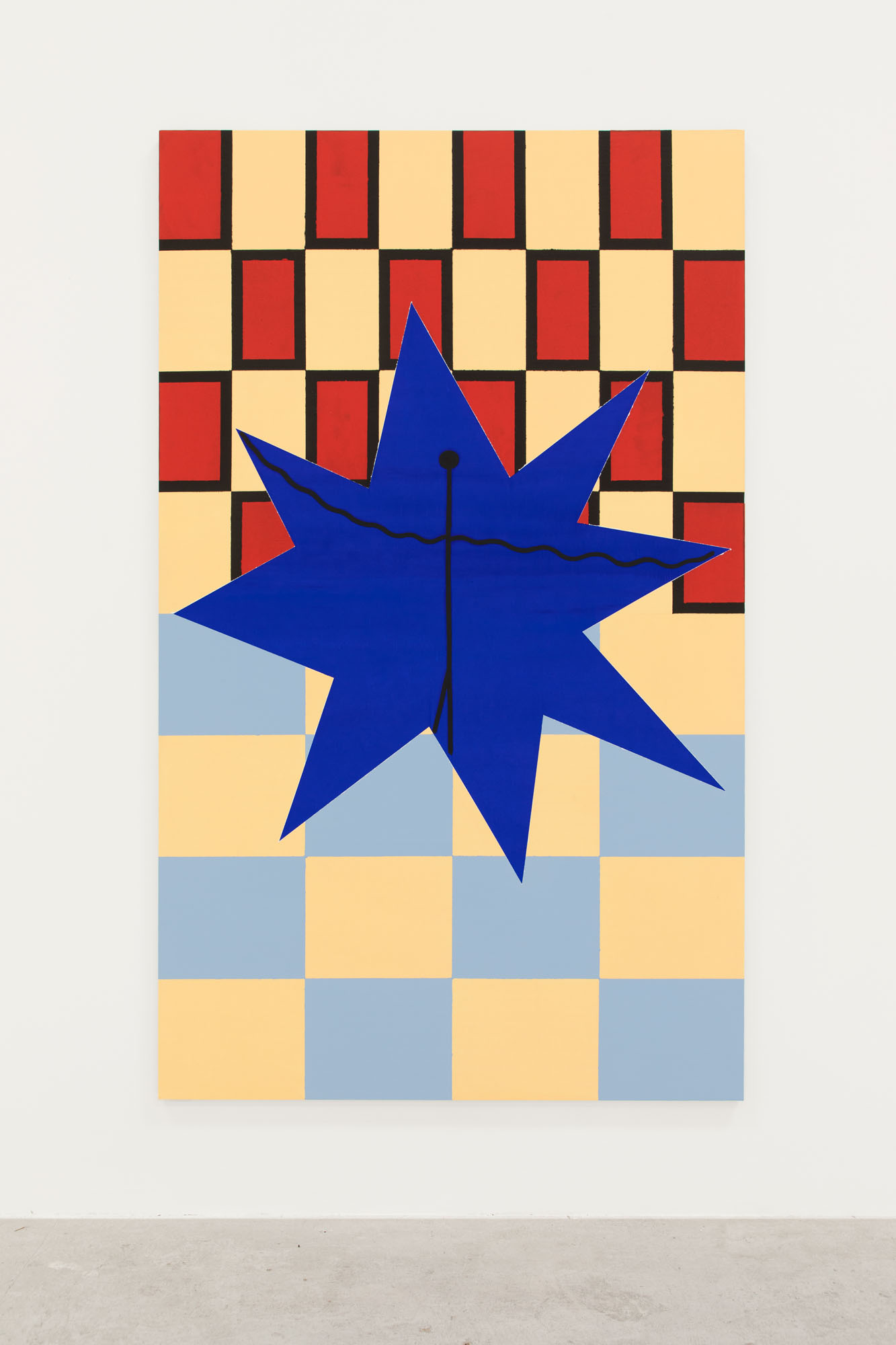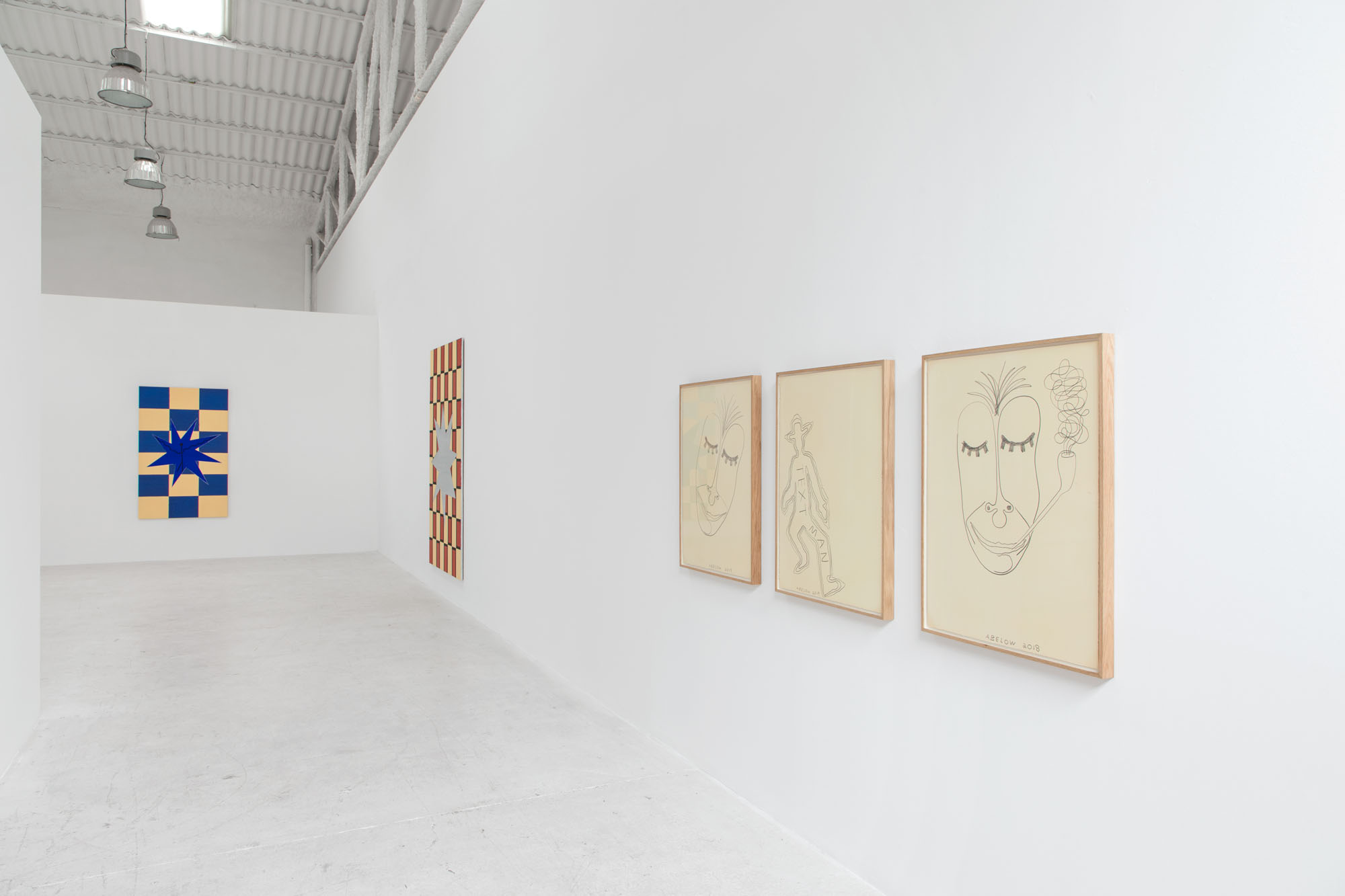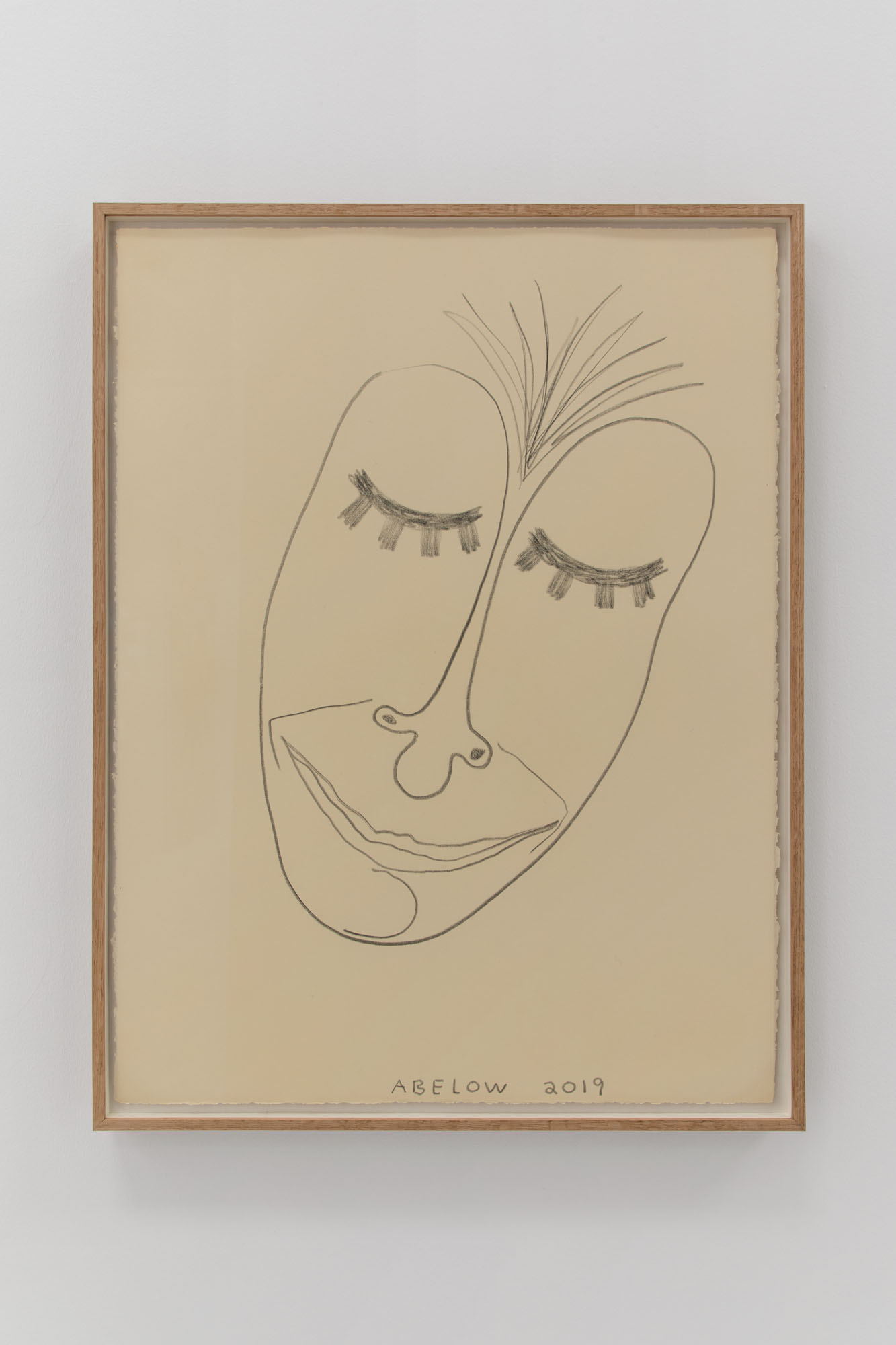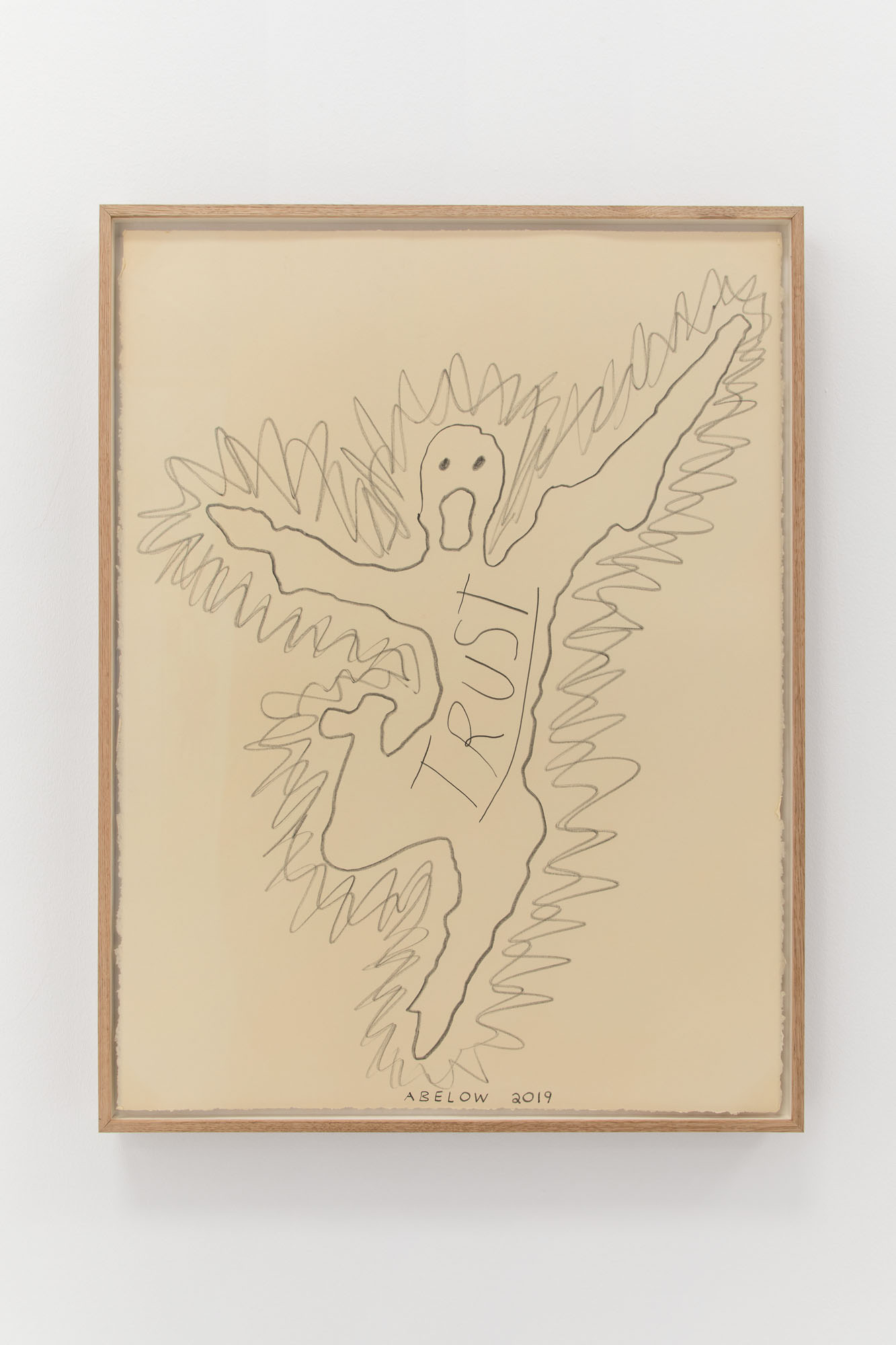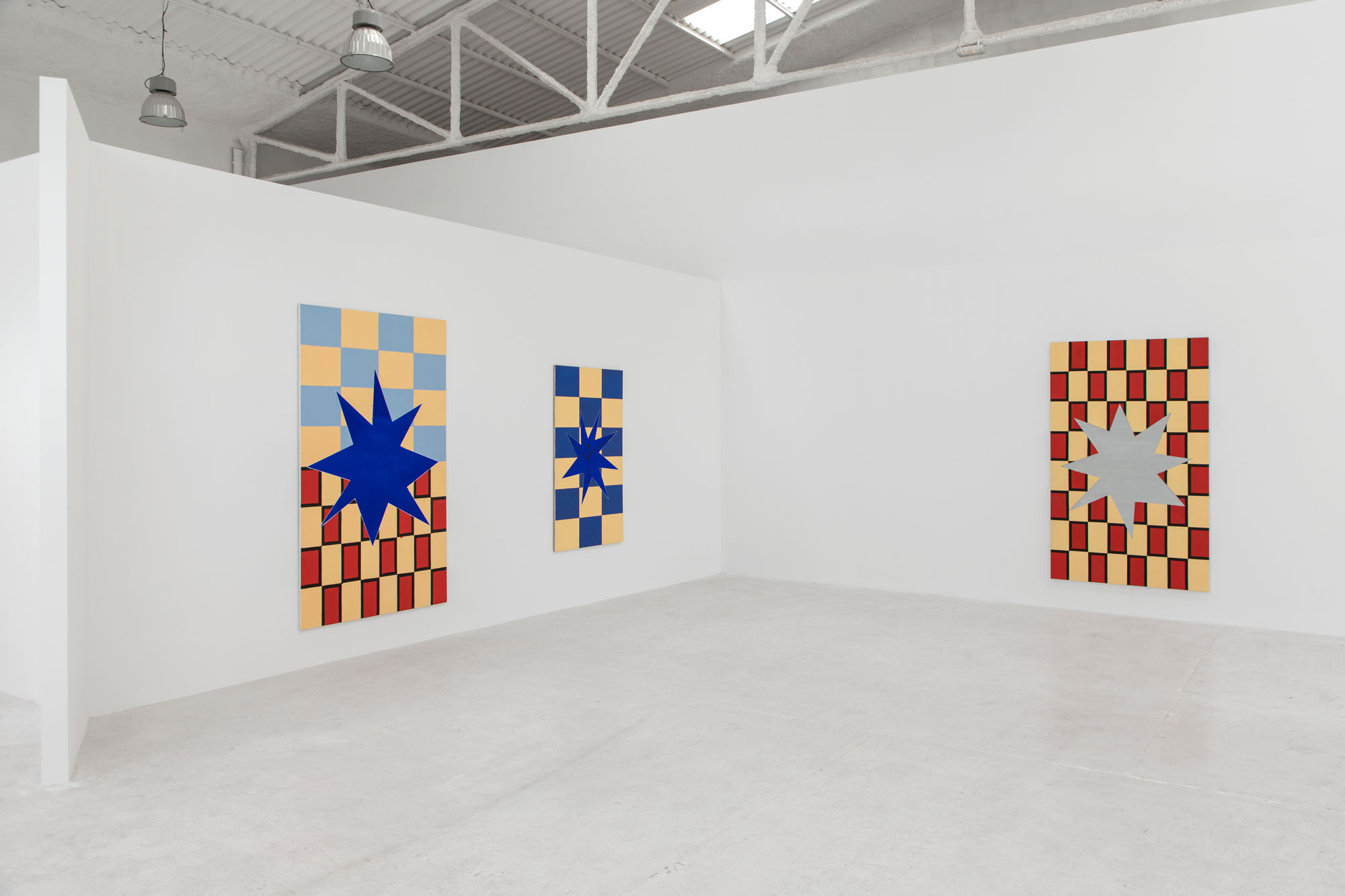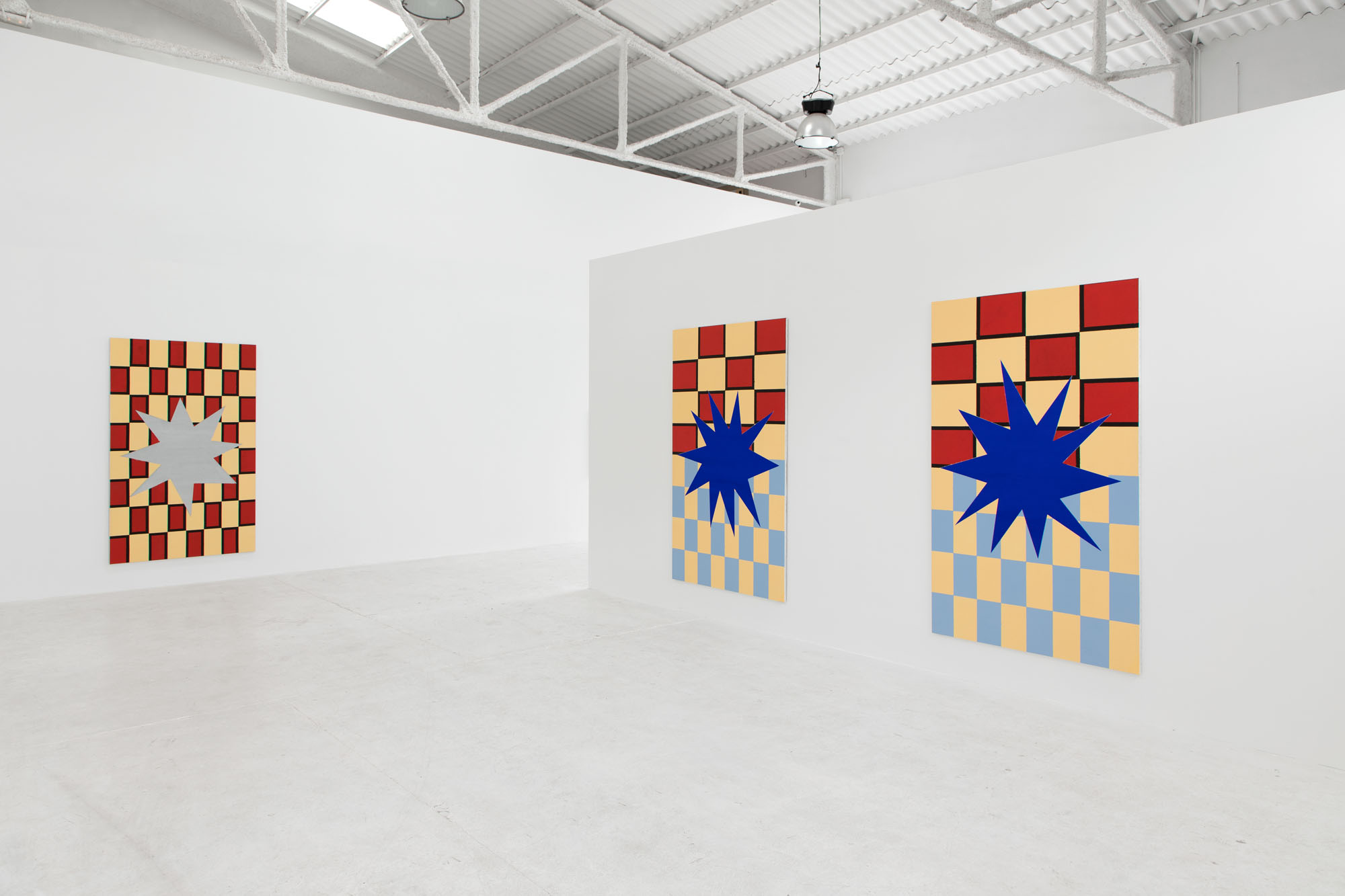Artist: Joshua Abelow
Exhibition title: Installation Views
Venue: L21 Gallery, Mallorca, Spain
Date: January 16 – March 6, 2020
Photography: all images copyright and courtesy of the artist and L21 Gallery, Mallorca
What’s the difference between an artwork and the reproduction of an artwork?
According to Boris Groys, “Art documentation is by definition not art; it merely refers to art, and in precisely this way it makes it clear that art, in this case, is no longer present and immediately visible but rather absent and hidden.”
It’s intriguing to imagine the reproduction of an artwork as a visual representation of absence.
What if the artwork takes its own absence into consideration? In other words, what happens when an artwork is made with the understanding that its primary purpose is to be duplicated and distributed on the Internet, rather than or in addition to a passive viewing?
The painter, Thomas Lawson, in his famous essay titled, “Last Exit: Painting,” originally published in the October 1981 issue of Art Forum, described painting as the perfect camouflage, “…it must be remembered that Picasso considered Cubism and camouflage to be one and the same, a device of misrepresentation, a deconstructive tool designed to undermine the certainty of appearances.”
What if we interpreted each jpeg as a misrepresentation rather than a representation of the artwork or exhibition?
Why has the documentation of the exhibition eclipsed the importance of the exhibition itself? Why are we more interested in the installation views than the installation? Once again, I think of Boris Groys, “Today’s artistic events cannot be preserved and contemplated like traditional artworks. However, they can be documented, ‘covered,’ narrated and commented on. Traditional art produced art objects. Contemporary art produces information about art events.”
According to this logic, contemporary art exhibitions are only as important as the information (visual and otherwise) they produce in order to be archived. This emphasis on the archive is easily seen on any gallery or institutional website, art blog, or Instagram. We revisit these sites again and again, long after the exhibitions are over. Consciously or unconsciously we are obsessed with visually consuming absence. Nowhere is this phenomenon more apparent than TV or cinema. Perhaps, we are preparing for our unavoidable future; a future where human biology is more and more absent from the human body.
Below is a prediction of what the year 2080 will look like from a website called Future Timeline:
“Today, the average citizen has access to a wide array of biotechnology implants and personal medical devices. These include fully artificial organs that never fail, bionic eyes and ears providing Superman-like senses, nanoscale brain interfaces to augment the wearer’s intelligence, synthetic blood and bodily fluids that can filter deadly toxins and provide hours’ worth of oxygen in a single breath.
Some of the more adventurous citizens are undergoing voluntary amputations to gain prosthetic arms and legs, boosting strength and endurance by orders of magnitude. There is even artificial skin based on nanotechnology, which can be used to give the appearance of natural skin when applied to metallic limbs.
These various upgrades have become available in a series of gradual, incremental steps over preceding decades, such that today, they are pretty much taken for granted. They are now utilized by a wide sector of society – with even those in developing countries now having access to some of the available upgrades due to exponential trends in price performance.
Were a fully upgraded person of the 2080s to travel back in time a century and be integrated into the population, they would be superior in almost every way imaginable. They could run faster and for longer distances than the greatest athletes of the time; they could survive multiple gunshot wounds; they could cope with some of the most hostile environments on Earth without too much trouble. Intellectually, they would be considered geniuses – thanks to various devices merged directly with their brain.”
-Joshua Abelow
Joshua Abelow (b. 1976) lives and works in Harris, New York and New York, New York. Abelow received his BFA from the Rhode Island School of Design (1998) and his MFA from the Cranbrook Academy of Art (2008). Abelow has exhibited work at several galleries both nationally and internationally. Freddy was founded in Baltimore, Maryland in 2014. In 2016, Abelow moved Freddy to Harris, New York where he has, to date, presented twenty exhibitions in his renovated church. Additionally, Abelow is known for his blog, ART BLOG ART BLOG, which was updated on a daily basis for five years (2010-2015).
Joshua Abelow, Installation Views, 2020, exhibition view, L21 Gallery, Mallorca
Joshua Abelow, Installation Views, 2020, exhibition view, L21 Gallery, Mallorca
Joshua Abelow, Untitled, 2019, Pencil on paper, Framed in wood, 84 x 56 cm
Joshua Abelow, Untitled, 2019, Pencil on paper, Framed in wood, 84 x 56 cm
Joshua Abelow, Untitled, 2018, Pencil on paper, Framed in wood, 84 x 56 cm
Joshua Abelow, Installation Views, 2020, exhibition view, L21 Gallery, Mallorca
Joshua Abelow, Installation Views, 2020, exhibition view, L21 Gallery, Mallorca
Joshua Abelow, Installation Views, 2019, Oil on linen, 203 x 122 cm
Joshua Abelow, Installation Views, 2019, Oil on linen, 203 x 122 cm
Joshua Abelow, Installation Views, 2020, exhibition view, L21 Gallery, Mallorca
Joshua Abelow, Installation Views, 2020, exhibition view, L21 Gallery, Mallorca
Joshua Abelow, Installation Views, 2020, exhibition view, L21 Gallery, Mallorca
Joshua Abelow, Untitled, 2019, Pencil on paper, Framed in wood, 84 x 56 cm
Joshua Abelow, Installation Views with Transmitter, 2019, Oil on linen, 203 x 122 cm
Joshua Abelow, Installation Views, 2020, exhibition view, L21 Gallery, Mallorca
Joshua Abelow, Untitled, 2019, Pencil on paper, Framed in wood, 84 x 56 cm
Joshua Abelow, Installation Views, 2020, exhibition view, L21 Gallery, Mallorca
Joshua Abelow, Installation Views, 2019, Oil on linen, 203 x 122 cm
Joshua Abelow, Transmitter, 2019, Oil on linen, 152.5 x 91.5 cm
Joshua Abelow, Installation Views, 2020, exhibition view, L21 Gallery, Mallorca
Joshua Abelow, Untitled, 2019, Oil on linen, 203×122 cm

